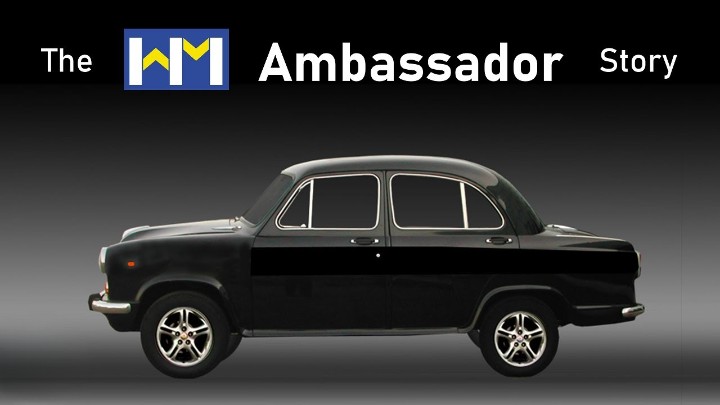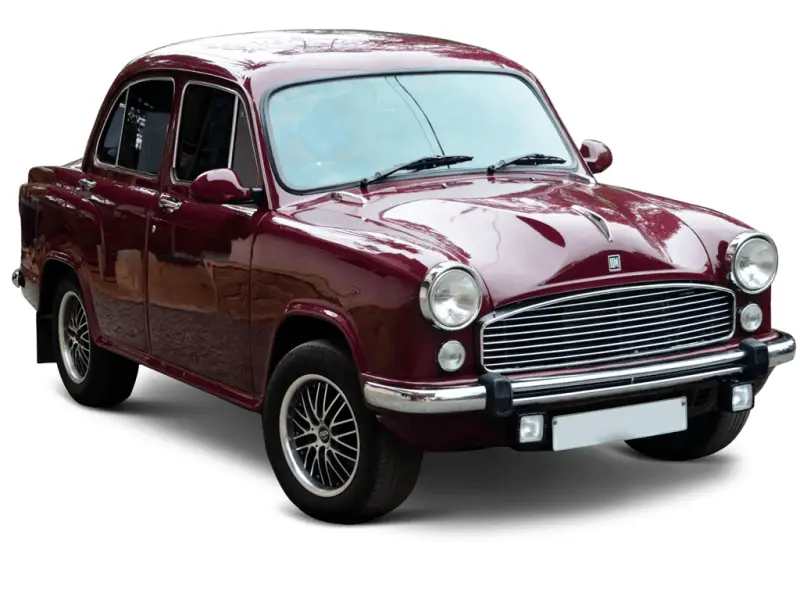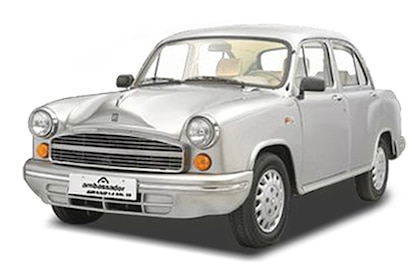The iconic Ambassador car, produced by Hindustan Motors, held a special place in the hearts of Indians. From the 1960s until 2014, this vehicle maintained its appearance despite the need for updates. Many people speculated about the reasons behind this lack of change. Contrary to popular belief, it wasn’t simply due to the company’s desire to preserve the iconic design based on consumer preference. In this article, we delve into the fascinating story of the Ambassador car and shed light on the true reasons behind its unchanged looks.

Introduction:
The Legacy of the Ambassador Car
The Ambassador car, an automobile deeply ingrained in Indian culture, captured the imagination of generations. With its distinctive design and association with power, prestige, and nostalgia, it became an enduring symbol of the country’s automotive industry.
Hindustan Motors and the Monopoly in the Indian Car Market
The Ambassador car’s unchanging appearance can be attributed to the company’s monopoly in the Indian car market. During the license raj era, a system that limited the number of car manufacturers in India, the Ambassador car accounted for a staggering 75% of all cars sold in the country.


The Origins of Hindustan Motors and the Ambassador Car:
Hindustan Motors, founded by the Birla group in 1942, initially assembled Morris cars. However, over time, they acquired the rights to Austin Morris cars, and the Ambassador became a popular vehicle in the 1950s and 60s. Instead of making significant changes, Hindustan Motors stretched the same models until the 1990s, thanks to the lack of competition in the market.

Lack of Competition: The Result of Restrictive Policies
The Indian government implemented protectionist measures that made it challenging for foreign companies to operate and hindered Indian companies from expanding without permission. This lack of competition allowed Hindustan Motors to maintain a dominant position in the market, but it also
The Ambassador Car’s Engine and Suspensions
The Ambassador car relied on an engine developed by the British company BMC in 1953. Despite its age and overheating issues, the same engine was used until the mid-1990s. The car also featured leaf spring suspensions throughout its production, highlighting the lack of technological advancements.
Entry of Maruti Suzuki and Hindustan Motors’ Struggles
In the mid-1980s, the Indian market began to open up, and Hindustan Motors introduced Isuzu’s petrol and diesel engines to enhance reliability. However, the company faced fierce competition from Maruti Suzuki, which had entered the market with government collaboration. Hindustan Motors’ limited resources for research and development, with only 250 dedicated employees, posed a significant challenge.


Comparisons with the Japanese Automobile Industry
A comparison can be drawn between the Indian and Japanese automobile industries. While Japan initially closed its market, it later thrived when opened to the world. Supported by their government, Japanese companies became global market leaders. In contrast, the Indian government and companies focused more on exploiting the Indian market than becoming industry leaders, resulting in missed opportunities for growth and innovation.
Impact of Restrictive Policies on India’s Growth
The restrictive policies that hindered competition in the Indian automobile industry had broader implications. These policies not only held back the automotive sector but also suppressed overall economic growth in the country and limited job opportunities for engineers and other professionals.
Stagnation and Political Influence
Despite being a period-correct car in the 1950s and 1960s, the Ambassador’s design remained largely unchanged over the years. This stagnation was not due to popular demand or customer loyalty, as many might assume. Instead, it was a consequence of the company’s political connections and the prevailing “License Raj” system.
The Birla group’s strong ties with the Nehru government allowed them to enjoy preferential treatment, and they continued to manufacture the Ambassador without making any significant design updates. The “License Raj” system required numerous permits and approvals for business operations, leading to widespread corruption and impeding innovation.
The Sentimental Value of the Ambassador Car
While acknowledging the Ambassador car’s sentimental value for many Indians, it is essential to understand the negative impact of wrong government policies and the lack of growth intentions from auto manufacturers at the time. The article aims to shed light on these aspects without diminishing the emotional connection people have with the iconic car.
New Ambassador Car:
Hindustan Motors, the company behind the Ambassador car, has recently announced its plans to launch four new variants of the popular model within the next twelve to fifteen months. Additionally, the company revealed its intention to introduce a completely new brand to target non-institutional buyers. This move comes in response to customer complaints about the lack of new products from the company.
According to Manoj Jha, the Managing Director of Hindustan Motors, the new variants of the Ambassador will feature both internal and external enhancements to differentiate them from the existing models. Currently, the personal car segment accounts for 25 percent of the total sales of the Ambassador. However, Jha stated that the company aims to increase this market share to 50 percent in the coming months.
These efforts by Hindustan Motors are aimed at expanding its presence in the personal car space and attracting a larger customer base. The company recognizes the need to introduce new products to meet customer expectations and stay competitive in the market.

Conclusion:
In conclusion, the unchanged looks of the Ambassador car throughout its production timeline were not solely due to the company’s desire to preserve its iconic design. Instead, it was a consequence of the monopoly created by restrictive policies and lack of competition in the Indian car market. The article suggests that if the market had been open earlier and Indian companies had focused on innovation and growth, the country could have advanced significantly in terms of manufacturing.
In this article, we have explored the intriguing story of the Ambassador car and the reasons behind its unchanged looks. It is essential to understand the historical context and restrictive policies that shaped the Indian automotive industry. While the Ambassador car remains an iconic symbol, it also serves as a reminder of missed opportunities for growth and innovation.
FAQs:
Q1. Was the Ambassador car the only option available to Indian consumers during that period?
No, there were a few other car models available in the Indian market during that time. However, the restrictive policies limited the choices available to consumers, and the Ambassador car held a significant market share.
Q2. Did Hindustan Motors ever consider updating the Ambassador car’s design?
Hindustan Motors did make some minor updates and introduced Isuzu’s engines to enhance reliability. However, significant design changes were not made, primarily due to the lack of competition and limited resources for research and development.
Q3. How did the Ambassador car impact the Indian automotive industry?
The Ambassador car’s monopoly and the restrictive policies in the Indian car market hindered the growth and innovation of the industry. The lack of competition limited consumer choices and suppressed overall industry development.
Q4. Did the Indian government eventually ease the restrictive policies?
Yes, in the mid-1980s, the Indian market began to open up, allowing foreign companies to enter the automotive industry. This led to increased competition and challenges for Hindustan Motors.
Q5. Is the Ambassador car still in production?
No, Hindustan Motors ceased production of the Ambassador car in 2014. However, the car continues to hold a special place in the memories of Indians.






